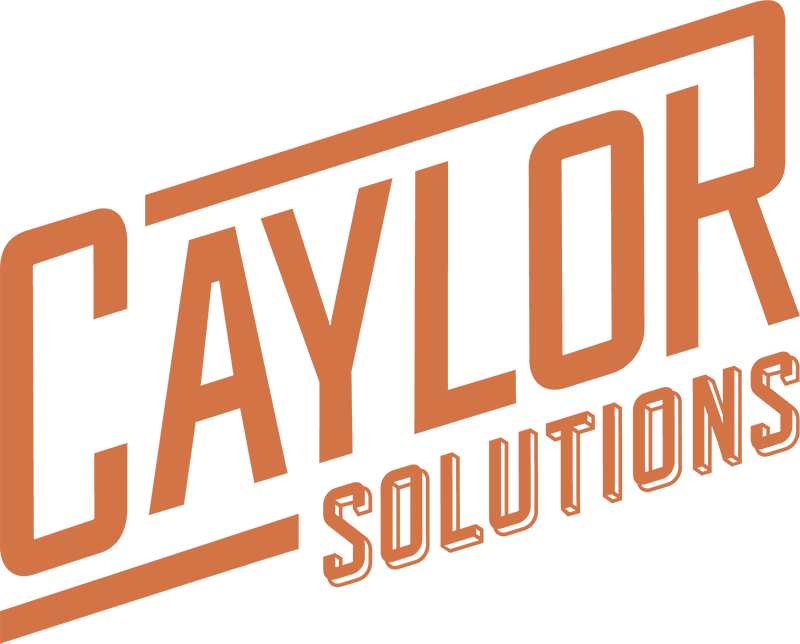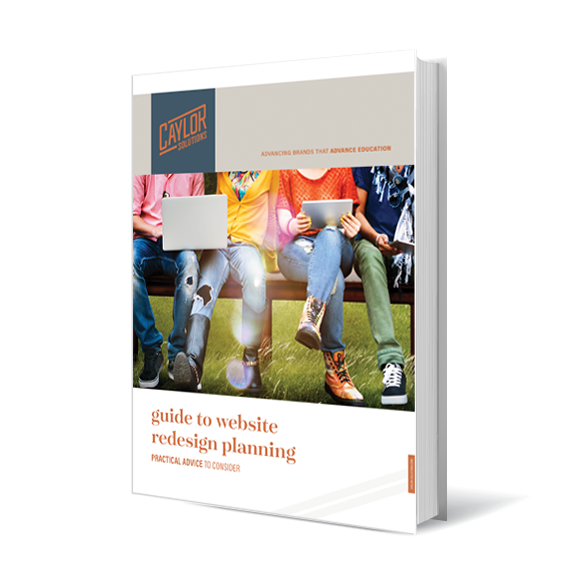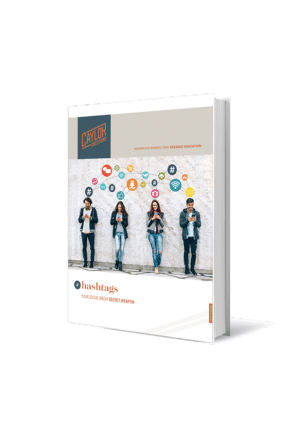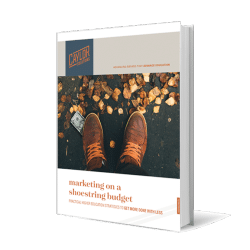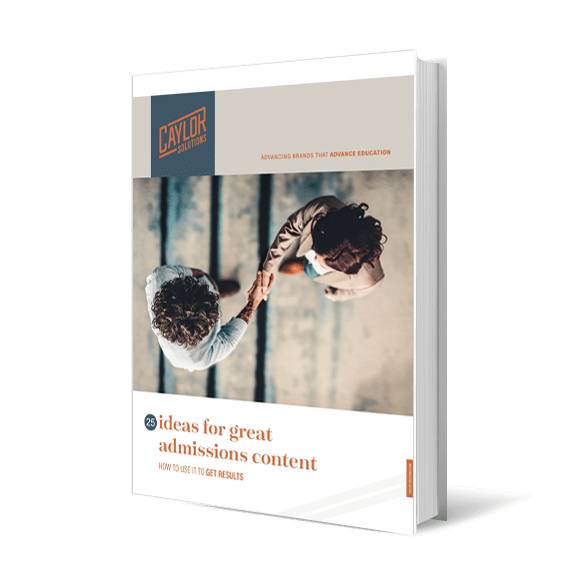We’ve spoken before of the need for a well-designed Facebook strategy, but to get the most out of this platform, you also need a strategy for your university Meta ads.
Facebook is one of the most powerful targeting ad platforms out there. With over 2.8 billion monthly active users, the social media behemoth is a huge market for enrollment.
Coming right up on its heels, Instagram has over 2 billion active users worldwide, and more than 70% of them are under the age of 35. This makes it an ideal channel to connect with prospective students, current students, alumni, and other stakeholders.
If you’re new to Meta ads marketing, then this post will be of great help to you.
But even if you’re a social media marketing veteran, you still might want to give it a quick scan.
Perhaps you’ll find something in this list to help you get even more out of your university Meta ads.
1. Understand Your Audience
Before spending a dime, pinpoint who you’re trying to reach.
You should already have marketing personas written out for your general Facebook and Instagram strategy.
However, you should also identify your target audience for each university Meta ad campaign with as many specifics written out as you can. While you may not need to include all of them, being clear with your market will allow for greater precision in the prospective students you’ll reach.
Some of the most common marketing personas are:
- Parents of middle and high schoolers
- Traditional prospective students
- Non-traditional adult students coming back to further their education
But you might be targeting other audiences as well, such as:
- Transfer students
- International students
- Alumni for giving campaigns
Based on each persona, consider segmenting each audience within its own ad group to ensure you’re targeting each group with individualized messaging that speaks directly to them.
I recommend you also consider targeting your audiences based on the program or offer that you are promoting.
Who are the kinds of people who would be interested in this program or offer?
Are they male or female? How old are they? What are their interests, hobbies, beliefs, and concerns?
After sketching out the target audience for each university Meta ad campaign, use Facebook’s detailed targeting options to hone in on demographics, interests, and behaviors specific to your audience.
As you’re refining your market size, be mindful to ensure you’re not layering too many interests and targeting too small of an audience.
As a general best practice, ads on Meta platforms are distributed best when you’re able to target an audience segment larger than 1 million people.
While certainly not every single member of your audience will be an ideal student, Meta’s algorithm works best when it’s able to utilize a large sample size, allowing its machine learning to determine the best fit to serve your ads.
When finalizing your audiences, try not to layer more than 3-5 attributes in one audience, and utilize Facebook’s geofencing features to target more by radius.
As detailed interests become less reliable on the platform, use copy and design to attract your prospect from among the larger audience pool that you’ve segmented through Meta’s geofencing and advanced targeting capabilities.
2. Tell a Story
People connect with stories, not just facts.
Storytelling is central to compelling marketing, and university Meta ads are no different.
Highlight a successful alumnus or a unique campus tradition in your ad.
It doesn’t have to be a long narrative, even a single image or a brief video can tell a powerful story. When you can incorporate genuine transformation or results within your campaigns, people respond.
Each ad should be a moment captured in time of the larger story of your education brand.
Whatever photo or video you use in the ad should entice the target audience to go deeper and learn more of your story.
The content you post in your ad is the most effective targeting you have, hooking your ideal audience in and separating your school from the rest through a compelling story.
It should invite them to join your community and become a part of that story.
Stories are also powerful ways of conveying the emotions you want to be associated with your brand.
Emotive storytelling can make your university Meta ads “sticky” and unforgettable so they don’t blend in as the advertising market becomes highly saturated.
3. Optimize for Mobile
Most Facebook and Instagram users access the platform via mobile.
Ensure your ad visuals and text look appealing on smaller screens.
Avoid sprawling campus photography as the grandeur of your location is lost in the small real estate of mobile devices.
I’ve found that close up shots of people enjoying your school’s community (in class, on the quad, in the library, at a sports event, etc.) are powerful images that really shine on mobile.
Using Facebook’s Ad Preview tool will help you see how your ad appears on different devices.
4. Use High-Quality, Authentic Visuals
Facebook is now a visual platform.
While there was a time in the not-so-distant past in which Facebook users would write out blog-sized posts, today other platforms such as Instagram have reshaped Facebook’s approach.
Today, users expect a news feed full of colorful, creative imagery.
In order for your university Meta ads to stand out, avoid posting candid photos from an amateur photographer taken on their outdated cell phone.
Instead, I recommend that you invest in high-quality images or videos that represent your university’s brand.
Even with a small budget, consider professional or even student photographers. User generated content from existing students that blend in and feel native to the platform can be some of the most powerful content.
While they might still use a cell phone camera, they will know how to use it to get high-quality photos for your ad campaigns.
Another key to remember here is authenticity – capture real moments on your campus.
Stock photography’s pristine look may be tempting to use, but they can make your school look unreal and staged.
So use stock photography as sparingly as possible.
Finally, ensure you are leveraging all placements including Facebook stories and reels. Not having optimal dimensions can harm your ad performance.
5. Test and Learn
Even if you have a limited budget, it’s wise to test different ad formats, images, and copy.
For instance, run two ads with everything identical except for the image. See which one performs better.
This method, known as A/B testing, helps refine your strategy without spending extra.
It will amaze you to see how little changes, such as using a different typography or color in your campaign, can impact your ad results.
6. Call to Action (CTA)
Clearly guide your audience on what to do next.
Whether it’s “Apply Now,” “Visit Our Campus,” or “Donate Today,” make sure the CTA is clear and compelling.
In an attempt to avoid being cliché, some campaigns use ambiguous slogans such as “Live the Dream!” or “Make It Happen!” However, these calls to action are not concrete, making it more confusing for users.
What does it mean to “Live the Dream”? If they click on the ad, what will happen?
A call to action is your final push to get your audience to move in the direction you want, so don’t leave this to chance.
7. Track and Adjust
Use Facebook’s Ad Manager to monitor how your ads perform.
Look at metrics like click-through rates, engagement, and most importantly, conversions. Ensure before you launch a campaign you’ve installed tracking correctly.
If an ad isn’t performing well after a certain period, consider adjusting its elements or targeting.
With limited budgets getting tighter every day, you don’t want to set your ads on autopilot. You’ll want to establish a cadence to review your ads every few days at a minimum to gauge performance, making changes on a weekly basis.
Paying close attention to your analytics will allow you to make quick, timely changes to optimize your ad campaigns.
Building Relationships
Marketing is about building relationships through communication and brand storytelling.
Part of the process of having healthy relationships is listening to the other person to get to know them better.
Tracking your university Meta ads is a way to listen to your audience, to learn from them.
What do they like? What do they respond well to? What really doesn’t touch their heart like you thought it would?
The more sensitive you are to your target audience, the more you can respond to the metrics you’re tracking, the better the relationship you’ll have with your audience…
…and the more they will reward you with click-throughs.
Bonus Tip!: Be Patient
Don’t be discouraged if you don’t see immediate results with your university Meta ads.
Marketing is as much about learning and adapting as it is about promoting.
Better to think about marketing as a marathon, not a sprint.
Stay committed, continue refining, and you’ll find a strategy that best serves your needs.
Special thanks to Ashley Monk, a Caylor Solutions’ PPC partner!
Ashley was so kind to provide her expertise to this blog post. I’m very grateful for her collaboration on this article because I know our readers are going to get so much more value from it due to her hard-won insights born out of real-world experience.

As a Facebook Verified Marketing Partner, contributing writer for Databox and JotForm, in addition to having clients featured in Forbes, Entrepreneur, and Huffington Post, Ashley helps growth-minded companies who have been unable to scale their services & digital products because they cannot dial in strategy or solve their own marketing problems. Her agency, Onya, is ranked one of the top 13 marketing agencies in Indianapolis and serves clients internationally.
Want to Improve Your Digital Marketing Results?
Then you’ve got to know how to write for the web. That’s why we want to send you our popular ebook: Writing for the Web: 7 Secrets to Content Marketing Success for Education Marketers!
With this helpful resource, you’ll learn how to: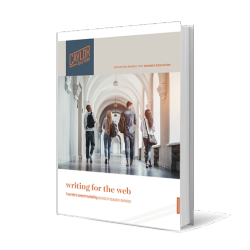
- Grab your reader’s attention immediately
- Pull your reader’s attention deeper into your content
- Write so that Google (and other search engines) find you easily
- Increase your website’s conversion rates
In short, you’ll be able to write the copy that makes your digital marketing strategy work for you. Download your copy today!
Featured image by PixieMe via Adobe Stock
